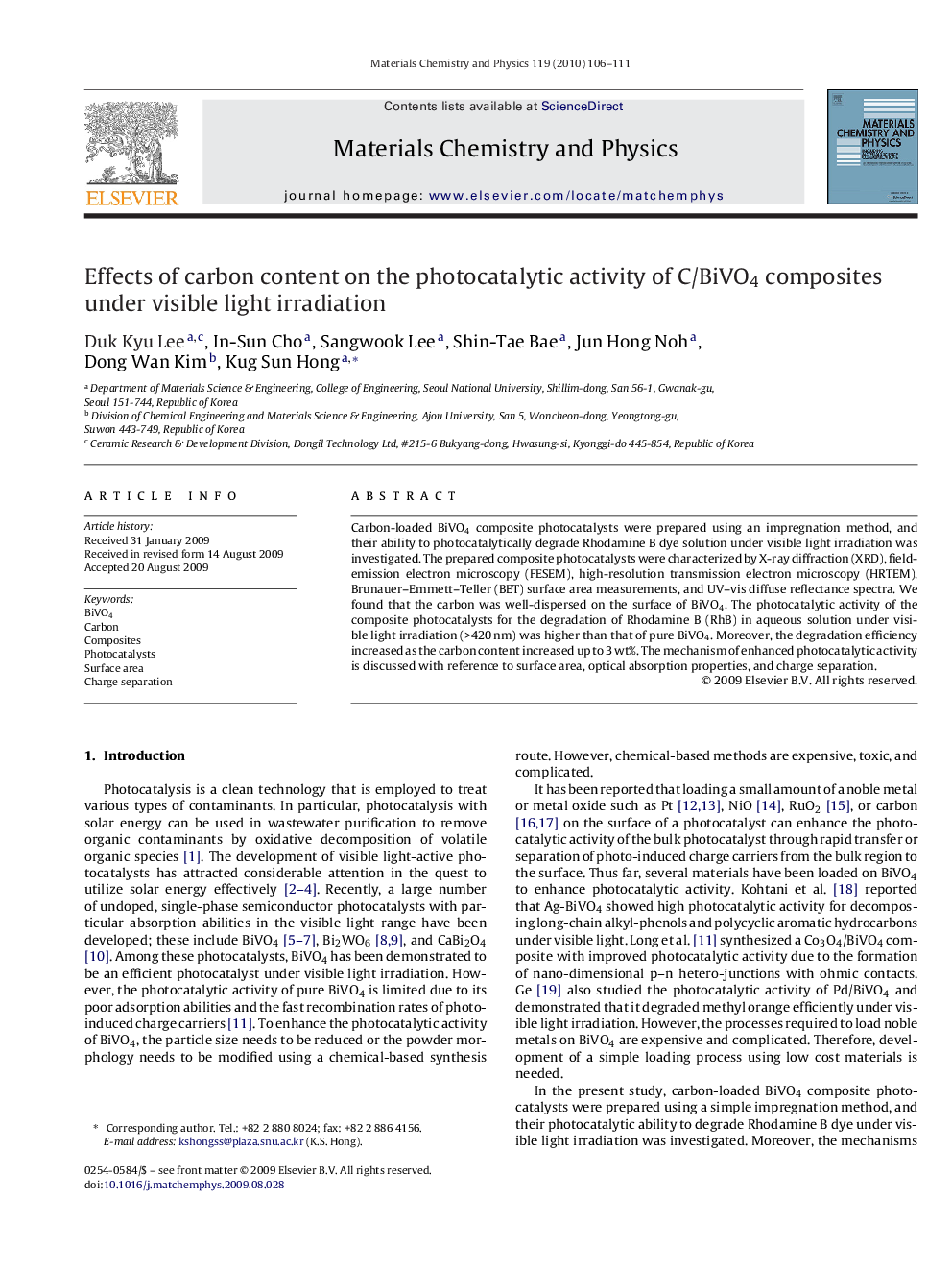| Article ID | Journal | Published Year | Pages | File Type |
|---|---|---|---|---|
| 1525756 | Materials Chemistry and Physics | 2010 | 6 Pages |
Carbon-loaded BiVO4 composite photocatalysts were prepared using an impregnation method, and their ability to photocatalytically degrade Rhodamine B dye solution under visible light irradiation was investigated. The prepared composite photocatalysts were characterized by X-ray diffraction (XRD), field-emission electron microscopy (FESEM), high-resolution transmission electron microscopy (HRTEM), Brunauer–Emmett–Teller (BET) surface area measurements, and UV–vis diffuse reflectance spectra. We found that the carbon was well-dispersed on the surface of BiVO4. The photocatalytic activity of the composite photocatalysts for the degradation of Rhodamine B (RhB) in aqueous solution under visible light irradiation (>420 nm) was higher than that of pure BiVO4. Moreover, the degradation efficiency increased as the carbon content increased up to 3 wt%. The mechanism of enhanced photocatalytic activity is discussed with reference to surface area, optical absorption properties, and charge separation.
